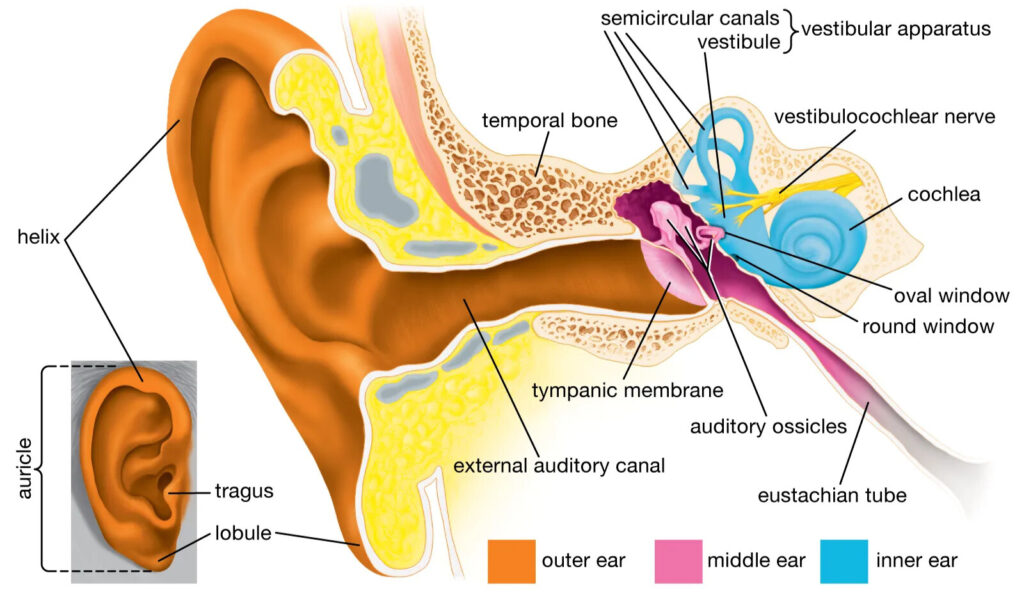We Hear Sound Through Our Ears
Key Notes :
How Sound Reaches the Ear:

- Sound is produced by vibrating objects. These vibrations travel as sound waves through air, water, or solids.
- When sound waves reach the ear, they are collected by the outer ear (the part we see) and funneled into the ear canal.
Structure of the Human Ear:

- The ear consists of three main parts:
- Outer Ear: Includes the ear canal and the eardrum.
- Middle Ear: Contains three tiny bones called the ossicles (hammer, anvil, and stirrup) that amplify sound.
- Inner Ear: Contains the cochlea, a fluid-filled structure with tiny hair cells that convert sound vibrations into electrical signals.
The Role of the Eardrum:

- The eardrum is a thin membrane that vibrates when sound waves hit it.
- These vibrations are transferred to the ossicles in the middle ear.
Amplification in the Middle Ear:

- The ossicles (hammer, anvil, and stirrup) act like levers, amplifying the vibrations from the eardrum before sending them to the cochlea.
Conversion to Electrical Signals:
- The cochlea converts vibrations into electrical signals through its hair cells.
- These electrical signals travel through the auditory nerve to the brain.
Perception of Sound:
- The brain processes the signals from the auditory nerve, allowing us to recognize different sounds (speech, music, noise).
- This is how we perceive pitch, volume, and tone.
Protecting Our Hearing:
- Exposure to loud sounds can damage the delicate hair cells in the cochlea, leading to hearing loss.
- Use ear protection in noisy environments, and avoid prolonged exposure to loud music.
Hearing Impairment:
- Damage to any part of the ear (outer, middle, or inner ear) can result in hearing loss.
- Hearing aids and cochlear implants can help individuals with hearing impairments.
Interesting Facts:
- The range of human hearing is typically between 20 Hz and 20,000 Hz.
- Animals like dogs and bats can hear frequencies higher than humans, allowing them to detect sounds we cannot.
Let’s practice!

